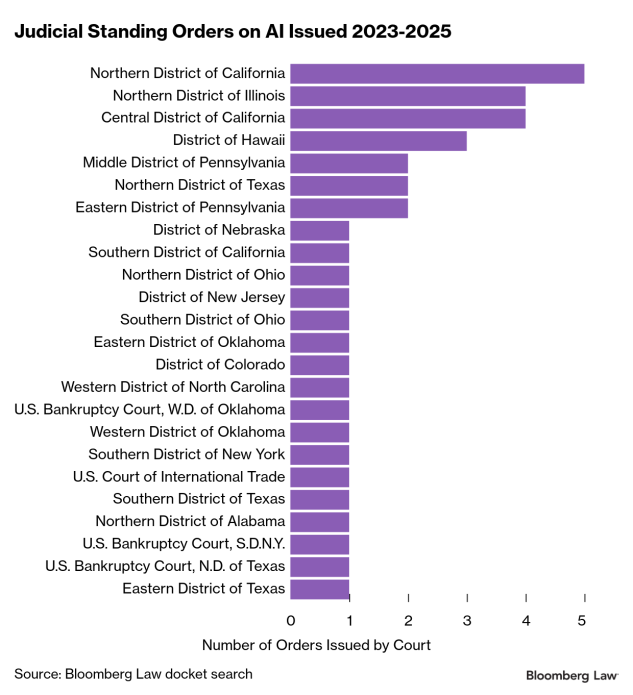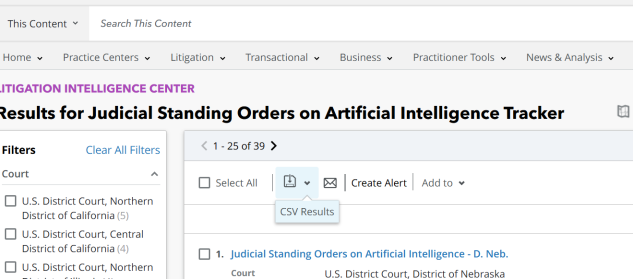This Bloomberg Law Data article contains step-by-step instructions that show Bloomberg Law subscribers how to conduct this research on their own. See GENERATE THE DATA below.
In response to incidents of lawyers’ improper use of generative artificial intelligence in submitted court filings, federal judges around the country have been issuing standing orders regulating the use of AI in their courtrooms. A search of Bloomberg Law’s Judicial Standing Orders tracker found that 39 federal judges have issued standing orders since the perils of AI hallucinations first made headlines in May 2023 (although the most recent data appears to show judges shifting their focus from issuing standing orders to sanctioning lawyers).
Of these 39 orders, 35 were issued by judges in federal district courts. Of the other four, three were issued by bankruptcy court judges and one by a judge at the US Court of International Trade.
Seven federal district courts have had multiple judges issue standing orders, with the Northern District of California leading with five, followed by the Central District of California and the Northern District of Illinois, each with four. Thirteen district courts have seen a single order issued from among their judges.
GENERATE THE DATA
To replicate the research that was used for this article and determine which federal courts have issued standing orders on AI:
1. Visit Bloomberg Law’s Litigation Resources page. (Bloomberg Terminal subscribers: Run BLAW OUT and search for “Litigation Resources.”)
2. Under Trackers, select the “Judicial Standing Orders on Artificial Intelligence Tracker.”
The Judicial Standing Orders on Artificial Intelligence tracker reflects standing orders regarding the use of artificial intelligence in federal courts from 2023 to present, includes a summary of each standing order, and clarifies what the order requires from the parties that appear before that particular court. The tracker is updated on a weekly basis.
3. The scope of the results can be filtered by Court, Judge, and the Nature of the Order.
4. After choosing filter preferences, download the records into a spreadsheet by clicking the download icon above the list of results, and selecting “CSV results.”
The resulting spreadsheet can now be used to view and sort the standing orders based on category (judge, court, nature of the order, issue date, and summary).
Because Bloomberg Law’s research tools are regularly updated, users’ results when following these instructions may differ from the results generated for this article.
To stay up to date on the judicial response to artificial intelligence use, follow along with Bloomberg Law’s Judicial Standing Orders on AI Tracker.
If you’re reading this on the Bloomberg Terminal, please run BLAW OUT <GO> in order to access the hyperlinked content, or click here to view the web version of this article.
To contact the reporter on this story:
To contact the editor responsible for this story:







